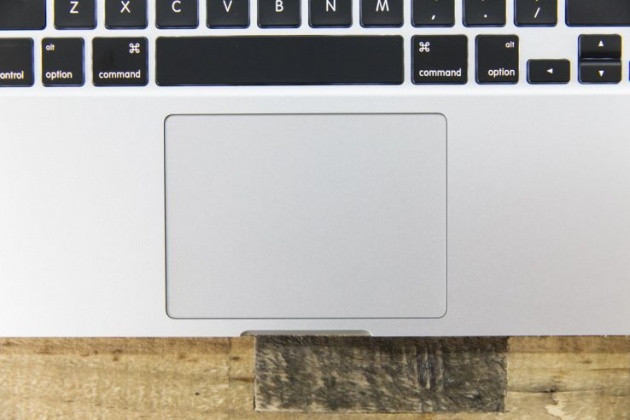
Apple has a new patent application that modifies one of their existing inventions based on one of their newly announced techs: Taptics. The application, published by the USPTO today (via Patently Apple) features a virtual keyboard design that resembles the current Magic Trackpad accessory in its construction, with a smooth piece of aluminum used instead of physical buttons. Virtual buttons without touch-based input are used instead, and Apple employs haptics to provide feedback for key presses.
Its own taptic version of haptic feedback could theoretically be used in the way it’s employed with the new Force Touch trackpad Apple has created for its MacBook and 13-inch Retina MacBook Pro. This would allow users to get the sensation that they were actually pressing physical keys, even though the keyboard itself would have no mechanical movement, which would answer one of the biggest criticisms users have of virtual keyboards.
Apple could also then offer up user customizations for the input device, configurable via software, the way it has on the Force Touch trackpad. You might be able to select different “depth” of key press sensations, depending on preference, or use Force Touch (secondary, deeper presses) to activate features like special characters, accents for other languages, or for triggering function keys.
Virtual input for things like standalone or MacBook keyboards has a lot in the way of potential benefits – imagine a keyboard that never needs dusting, or even thinner MacBooks thanks to the elimination of the need to build-in key travel. It’s also just less mechanically complex, which should make for longer life without failure. Apple’s recent advances with taptics could finally mean that this kind of keyboard is possible without the drawbacks of eliminating the physical typing sensation, which would differentiate it from other efforts to do the same.



